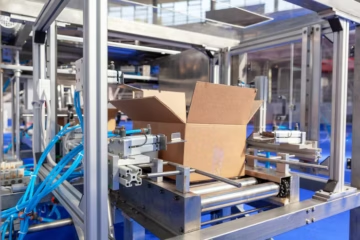Packaging machinery plays a vital role in various industries, including food, pharmaceuticals, chemicals, and electronics. This article provides an overview of packaging machinery, its types, functions, and trends in development.
Firstly, packaging machinery refers to the equipment used to complete all or part of the packaging process. It encompasses a wide range of machines, such as filling machines, sealing machines, wrapping machines, and packaging lines. These machines are designed to handle different types of products, from solid items to liquids and semi-liquids.

Types of Packaging Machinery
- Filling Machines
- Function: Fill containers with precise quantities of product.
- Classifications: Volumetric fillers (e.g., cup, piston, screw), gravimetric fillers (e.g., intermittent, continuous), and counting fillers.
- Applications: Suitable for packaging powder, granular, and liquid products.
- Sealing Machines
- Function: Seal containers after filling.
- Classifications: Sealers without sealing material (e.g., heat press, cold press), sealers with sealing material (e.g., screw, crimping), and sealers with auxiliary sealing material (e.g., tape, adhesive).
- Applications: Used to close containers and ensure product freshness.
- Wrapping Machines
- Function: Wrap products in flexible materials.
- Classifications: Full-wrap machines (e.g., twist, overlay) and half-wrap machines (e.g., folding, shrink).
- Applications: Ideal for blocky, long, or irregular-shaped products.
- Form-Fill-Seal Machines
- Function: Complete the forming, filling, and sealing of containers in one process.
- Classifications: Bag-forming, bottle-forming, box-forming, and blister-forming machines.
- Applications: Suitable for a wide range of products, including food, pharmaceuticals, and consumer goods.
- Vacuum and Gas Flushing Machines
- Function: Remove air from packages or replace it with inert gases.
- Applications: Extend the shelf life of products by preventing oxidation and microbial growth.
Functions and Benefits
Packaging machinery serves multiple functions, including product protection, preservation, transportation facilitation, and sales promotion. It helps maintain product quality, enhances shelf life, and ensures product safety. Additionally, packaging machinery improves production efficiency, reduces labor costs, and enables large-scale production.
Trends in Development
The packaging machinery industry is continuously evolving to meet the changing needs of consumers and industries. Key trends include:
- Automation and Integration: The integration of robotics, sensors, and automation technology is increasing, leading to more efficient and flexible packaging lines.
- Sustainability: There is a growing emphasis on reducing packaging waste and developing eco-friendly packaging solutions.
- Innovation in Materials: Advances in packaging materials, such as biodegradable and compostable materials, are being incorporated into packaging machinery.
- Customization: Packaging machinery is increasingly capable of producing customized and personalized packaging to meet consumer demands.
In conclusion, packaging machinery is an essential component of modern industrial production. With continuous innovation and development, it will continue to play a crucial role in protecting products, improving efficiency, and meeting consumer demands. As industries evolve, so too must packaging machinery, adapting to new challenges and opportunities in the market.


